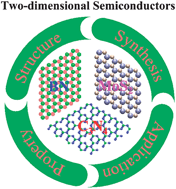Two-dimensional semiconductors: recent progress and future perspectives
Abstract
Graphene with a sp2-honeycomb carbon lattice has drawn a large amount of attention due to its excellent properties and potential applications in many fields. Similar to the structure of graphene, two-dimensional semiconductors are its two-dimensional and isostructural counterparts based on the typical layer-structured semiconductors, such as boron nitride (h-BN) and transition metal dichalcogenides (e.g. MoS2 and WS2), whose layers are bound by weak van der Waals forces. Unlike the semi-metal features of graphene, the two-dimensional semiconductors are natural semiconductors with thicknesses on the atomic scale. When one of the dimensions is extremely reduced, the two-dimensional semiconductors exhibit some unique properties, such as a transition from indirect to direct semiconductor properties, and hence have great potential for applications in electronics, energy storage, sensors, catalysis and composites, which arise both from the dimension-reduced effect and from the modified electronic structure. In this feature article, recent developments in the synthesis, properties and applications of two-dimensional semiconductors are discussed. The reported virtues and novelties of two-dimensional semiconductors are highlighted and the current problems in their developing process are clarified, in addition to their challenges and future prospects.


 Please wait while we load your content...
Please wait while we load your content...